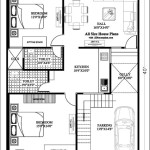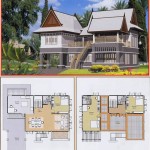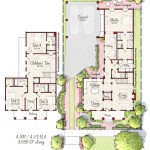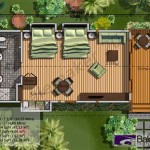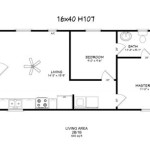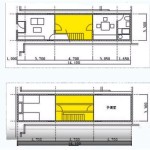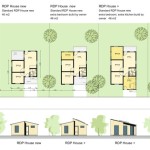Small Lake House Plans: Designing for Serenity and Efficiency
The allure of waterfront living draws many individuals to consider building a lake house. A smaller footprint lake house offers a compelling alternative to larger, more complex designs. Small lake house plans provide an opportunity to maximize the connection with nature while minimizing environmental impact and construction costs. These plans necessitate careful consideration of space utilization, functionality, and aesthetic integration with the surrounding landscape.
Effective small lake house plans center on the concept of intelligent design. This involves prioritizing features that enhance the lake experience, such as expansive windows offering panoramic views, outdoor living spaces that seamlessly blend with the interior, and layouts that encourage social interaction and relaxation. Beyond aesthetics, a well-designed small lake house prioritizes energy efficiency, sustainable building materials, and adaptability to the unique challenges of a lakeside environment.
The implementation of small lake house plans requires thorough planning from the outset. Defining the intended use of the lake house, including the frequency of occupancy and the number of occupants, is crucial. Understanding local building codes, environmental regulations, and site-specific considerations such as soil composition and water table levels is paramount. This preliminary research informs the design process, ensuring the final structure is both functional and compliant with all applicable standards.
Optimizing Space in Small Lake House Designs
The primary challenge in small lake house design is maximizing usable space without sacrificing comfort or functionality. Open floor plans are a fundamental strategy to achieve this. By minimizing the use of interior walls, living areas flow seamlessly together, creating a sense of spaciousness. The kitchen, dining area, and living room can merge into a single, cohesive zone, fostering interaction and allowing natural light to penetrate deep into the interior.
Beyond open layouts, incorporating multi-functional furniture is essential. Sofa beds, storage ottomans, and fold-away tables provide flexibility and adaptability. Built-in storage solutions, such as shelving units integrated into walls or under-staircase compartments, further contribute to efficient space utilization. These solutions minimize clutter and maximize the available square footage, allowing for comfortable living in a smaller footprint.
Vertical space often presents an untapped opportunity in small house design. Lofts can serve as additional sleeping areas, home offices, or recreational spaces, effectively expanding the usable area without increasing the ground footprint. High ceilings, even without a full loft, can create a sense of airiness and openness. Utilizing vertical space requires careful planning to ensure accessibility and safety but can significantly enhance the livability of a small lake house.
Another aspect of space optimization involves carefully considering the size and placement of appliances and fixtures. Compact appliances, such as apartment-sized refrigerators and combination washer-dryers, can save valuable floor space. Wall-mounted sinks and toilets can also free up room in bathrooms. Thoughtful planning of storage solutions, such as incorporating drawers into kitchen islands or utilizing vertical shelving in pantries, further contributes to efficient space management.
Strategic use of mirrors can also enhance the perception of space. Large mirrors placed strategically can reflect light and create the illusion of a larger room. This is particularly effective in smaller bathrooms or entryways where natural light is limited. Mirrors also add visual interest and can enhance the overall aesthetic appeal of the interior.
Integrating Indoor and Outdoor Living
One of the most compelling aspects of lake house living is the opportunity to connect with the natural environment. Small lake house plans should prioritize seamless integration of indoor and outdoor spaces. This can be achieved through various design elements, including expansive windows, sliding glass doors, and outdoor living areas such as decks, patios, and screened porches.
Large windows and sliding glass doors not only provide panoramic views of the lake but also allow natural light to flood the interior. This reduces the need for artificial lighting and creates a bright and airy atmosphere. Consider incorporating energy-efficient windows with low-emissivity coatings to minimize heat gain in the summer and heat loss in the winter. Strategic placement of windows can also maximize natural ventilation, further reducing energy consumption.
Decks, patios, and screened porches extend the living space of the lake house outdoors. These areas provide opportunities for relaxation, dining, and entertaining. A well-designed deck or patio should be easily accessible from the main living area, creating a seamless transition between indoors and outdoors. Consider incorporating outdoor furniture that is both comfortable and durable, as well as features such as outdoor kitchens, fire pits, and hot tubs to enhance the outdoor living experience.
Screened porches offer protection from insects and inclement weather, allowing for year-round enjoyment of the outdoors. They can be designed as extensions of the living room or dining area, providing a comfortable and versatile space for relaxation and entertainment. Consider incorporating features such as ceiling fans, outdoor lighting, and comfortable seating to maximize the functionality of the screened porch.
The landscaping surrounding the lake house also plays a crucial role in integrating indoor and outdoor living. Native plants and natural materials can create a harmonious connection with the surrounding environment. Consider incorporating features such as stone pathways, water features, and gardens to enhance the beauty and tranquility of the landscape. Minimizing lawn area and opting for low-maintenance landscaping can also reduce the environmental impact of the property.
Prioritizing Sustainability and Energy Efficiency
Sustainable building practices and energy-efficient design are increasingly important considerations in lake house construction. A small lake house provides an ideal opportunity to minimize environmental impact and reduce operating costs. Incorporating sustainable materials, energy-efficient appliances, and renewable energy sources can significantly enhance the long-term sustainability of the property.
Sustainable building materials, such as reclaimed wood, bamboo flooring, and recycled content insulation, can reduce the environmental footprint of the construction process. These materials are often more durable and require less maintenance than conventional building materials. Consider using locally sourced materials whenever possible to further reduce the environmental impact of transportation.
Energy-efficient appliances, such as Energy Star certified refrigerators, dishwashers, and washing machines, can significantly reduce energy consumption. LED lighting is another energy-efficient option that can save energy and reduce utility bills. Consider installing a programmable thermostat to automatically adjust the temperature based on occupancy and time of day.
Renewable energy sources, such as solar panels and geothermal heating systems, can further reduce the reliance on fossil fuels. Solar panels can generate electricity to power the lake house, while geothermal heating systems can provide efficient heating and cooling. These systems require an initial investment but can provide significant long-term savings on energy costs.
Water conservation is another important consideration in lake house design. Low-flow toilets, showerheads, and faucets can reduce water consumption without sacrificing performance. Consider installing a rainwater harvesting system to collect rainwater for irrigation and other non-potable uses. Native landscaping can also reduce the need for irrigation, as native plants are adapted to the local climate and require less water.
Proper insulation and air sealing are crucial for maintaining a comfortable indoor temperature and reducing energy consumption. Ensure that the walls, roof, and floors are adequately insulated to minimize heat loss in the winter and heat gain in the summer. Air sealing cracks and gaps around windows, doors, and other openings can further reduce energy waste. Consider using a professional energy auditor to identify areas where energy efficiency can be improved.

Open Concept Small Lake House Plans Houseplans Blog Com

Open Concept Small Lake House Plans Houseplans Blog Com

Best Lake House Plans Waterfront Cottage Simple Designs

Lake House Plans Floor Lakefront The Designers

Open Concept Small Lake House Plans Houseplans Blog Com

Small Lake House Plans With Screened Porch Lakefront Walkout Basement Info Sm Houses

Small Cabin Floor Plan 3 Bedroom By Max Fulbright Designs

Lake House Plans Blog Homeplans Com

Best Lake House Plans Waterfront Cottage Simple Designs

Lake House Plans Floor

